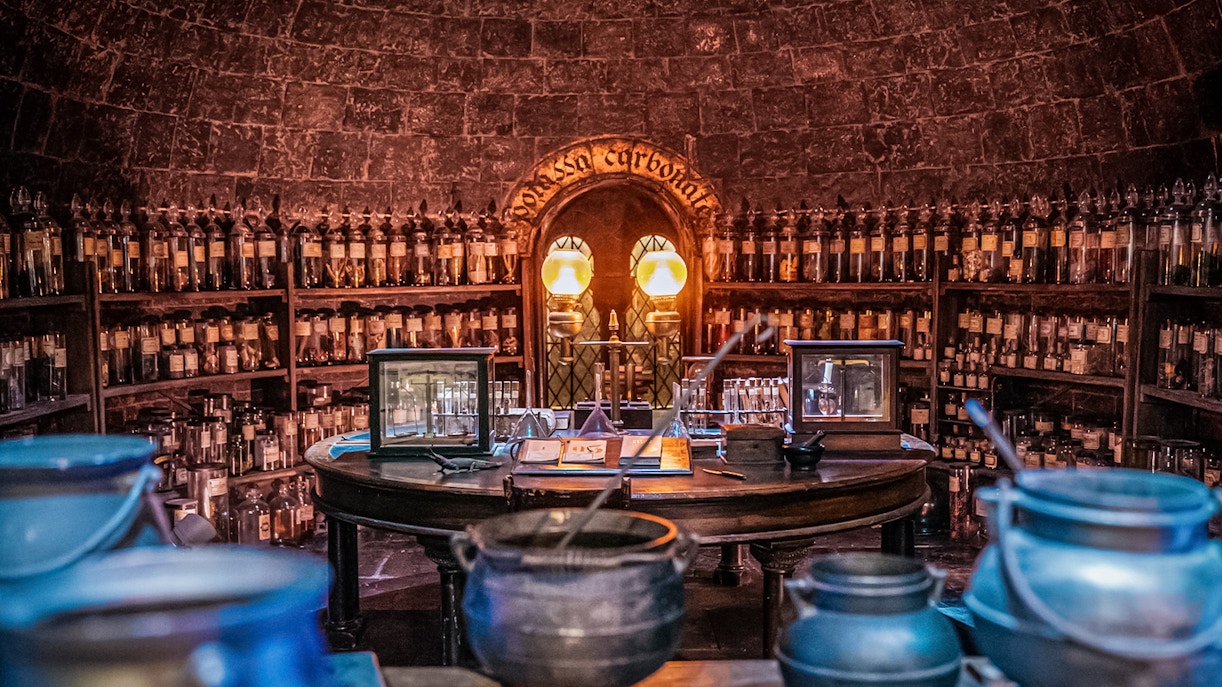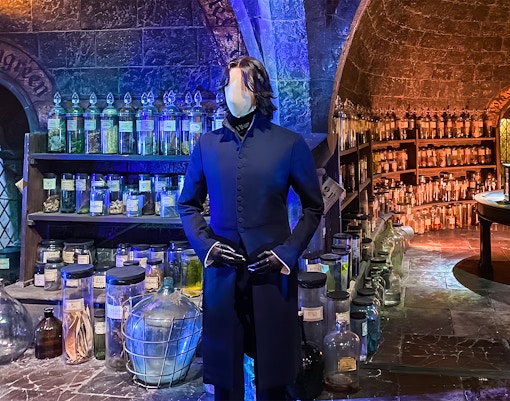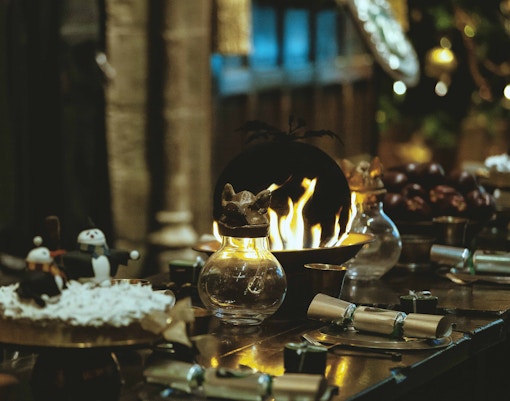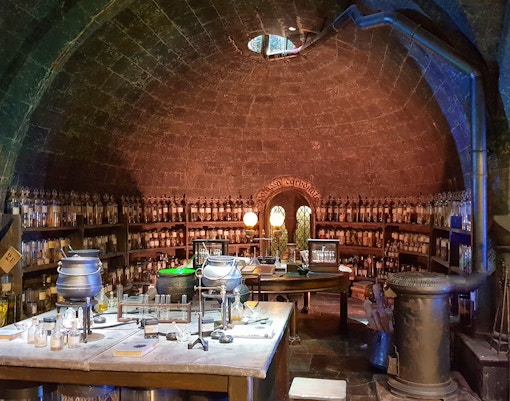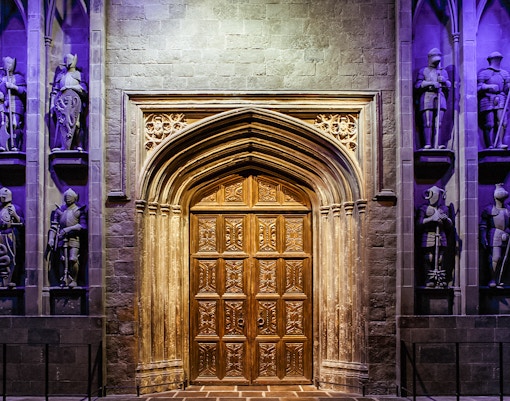- The Potions Classroom set sits in the shadowy depths of Hogwarts, with stone walls, flickering lanterns, and shelves packed with strange jars and ancient bottles straight from the films.
- Over 950 potion jars line the shelves, each filled with curious props like baked animal bones, dried herbs, and shrunken heads. Every label was individually designed by the graphic duo MinaLima.
- A self-stirring cauldron built by the special effects team takes center stage, while golden archways inscribed with mysterious alchemical ingredients add to the room’s eerie beauty.
- Though first filmed at Lacock Abbey, the classroom was rebuilt at Leavesden Studios and updated across the films to match shifting storylines and the teaching styles of Snape and Slughorn.
- Life-sized mannequins wearing original costumes of Snape and Slughorn stand among real props from the films, creating the feeling of being right inside a lesson at Hogwarts.
An overview of the Potions Classroom at the Warner Bros Studio
